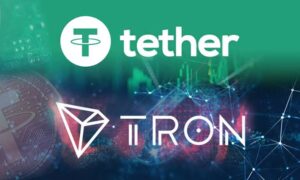
HOW ETHEREUM’S PECTRA UPGRADE COULD REVITALIZE BULLISH SENTIMENT
Ethereum has faced significant bearish sentiment lately, but a forthcoming upgrade may reverse this trend.
Recently, Ethereum’s performance has been lackluster, especially when compared to Bitcoin and Solana. Following the launch of the first US spot exchange-traded funds (ETFs) for Ethereum last month, the cryptocurrency’s price has dropped by nearly 30%.
However, the upcoming Pectra (Prague-Electra) upgrade, expected in the first quarter of 2025, could alter the negative outlook on Ethereum.
Key Enhancements for Ethereum
On August 20, DeFi researcher “Ignas” highlighted that it’s easy to be pessimistic about Ethereum due to its recent struggles. However, he mentioned that unlike previous upgrades, “Pectra seems to be flying under the radar without the usual hype.”
In recent years, Ethereum has undergone three major upgrades, each bringing significant improvements like the shift to proof-of-stake, the introduction of network fee burning, and the reduction of fees for layer-2 solutions.
The Pectra upgrade introduces several innovative features, such as Account Abstraction, which allows Externally Owned Accounts to temporarily function as smart contract wallets during transactions. This feature will enable transaction batching, fee sponsorship, and privilege management, enhancing the user experience for decentralized applications (dApps).
Additionally, the upgrade will increase the validator staking limit from 32 ETH to 2,048 ETH, allowing larger validators, reducing costs, and enabling smaller validators to benefit from compounded rewards.
The Peer Data Availability Sampling (PeerDAS) feature will also lower costs for layer-2 solutions by allowing nodes to verify large data availability without downloading everything.
Moreover, significant updates to the Ethereum Virtual Machine (EVM) will simplify the process of writing and deploying smart contracts, reduce gas fees, and boost efficiency for developers.
The Pectra upgrade is set to significantly enhance the user experience for both developers and end-users, making Ethereum more scalable, efficient, and user-friendly, which could drive greater adoption and shift market sentiment in a bullish direction.
Slow Progress, Long-Term Gains
Ethereum advocate Anthony Sassano stressed the importance of not rushing upgrades for the long-term success of the network.
There are also concerns about the potential impact of falling gas fees on Ethereum’s issuance, which has returned to an inflationary state. However, Coinbase researchers remain optimistic, suggesting that Ethereum’s demand will increasingly stem from its utility in other protocols rather than transaction fees, which may diminish over time.






